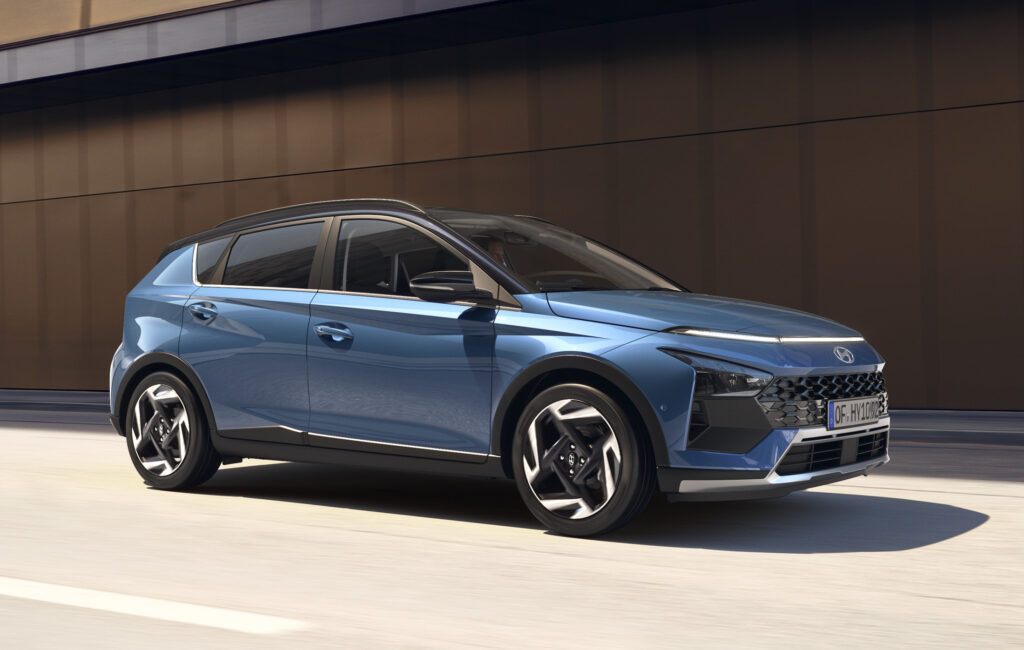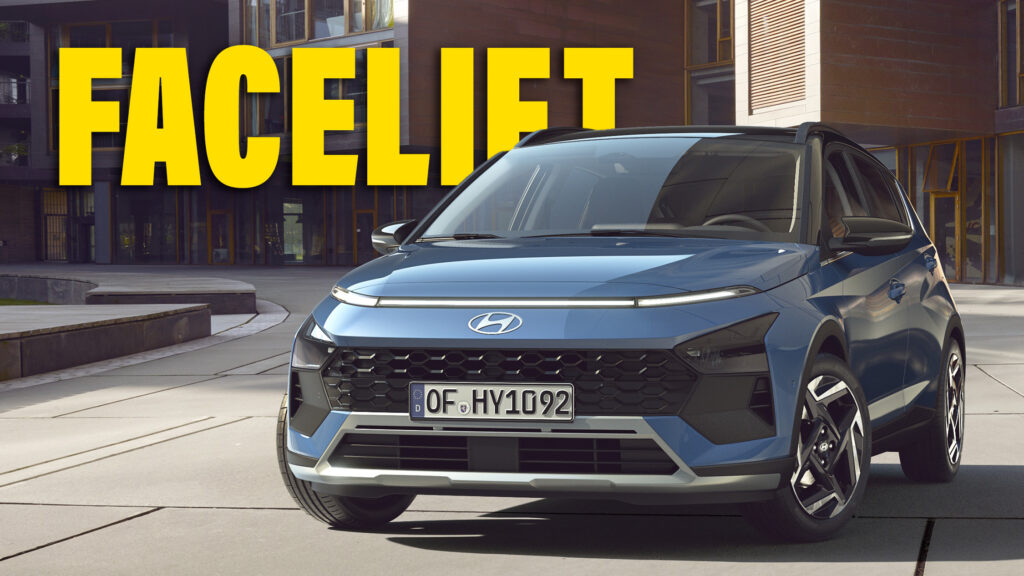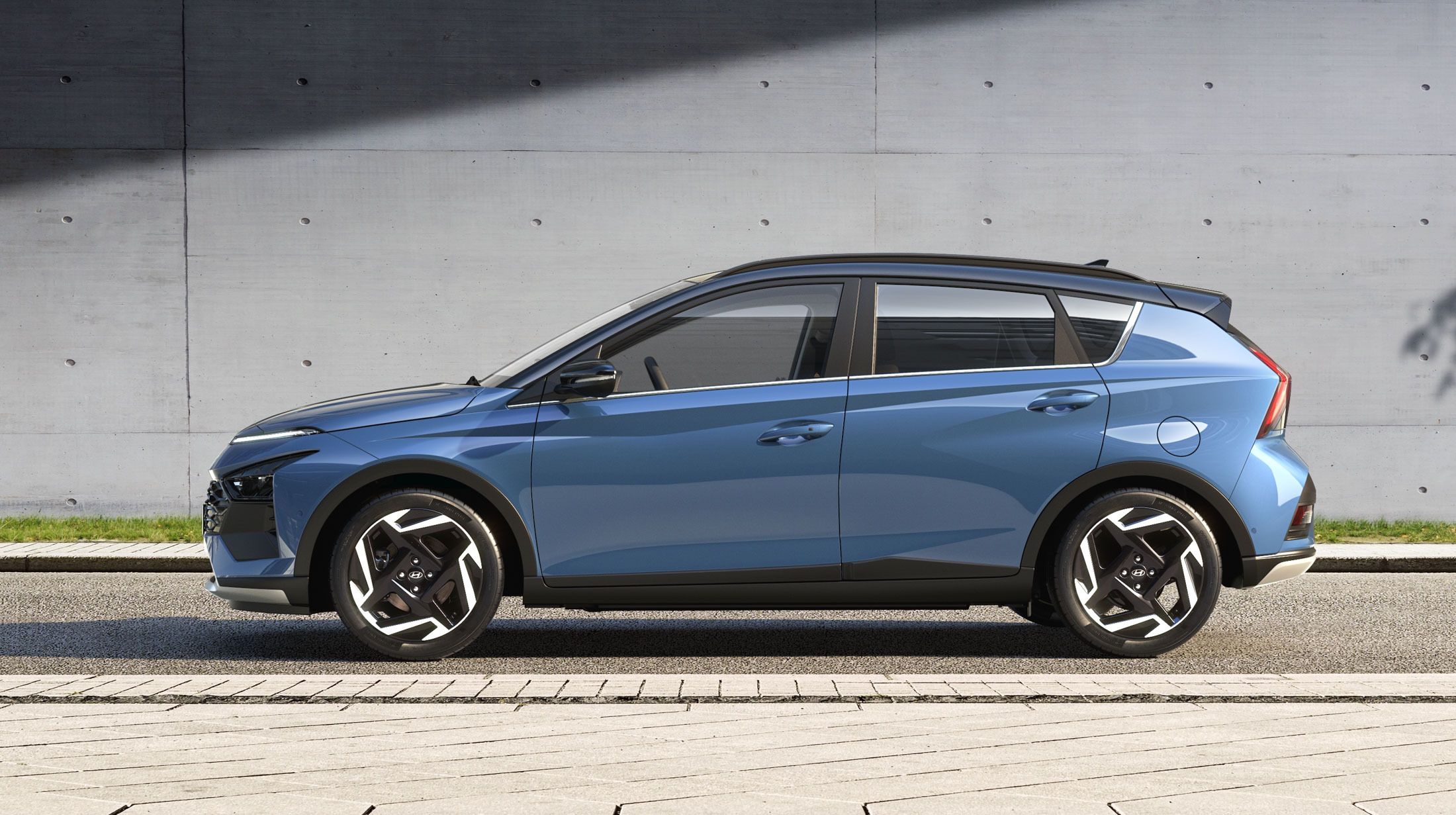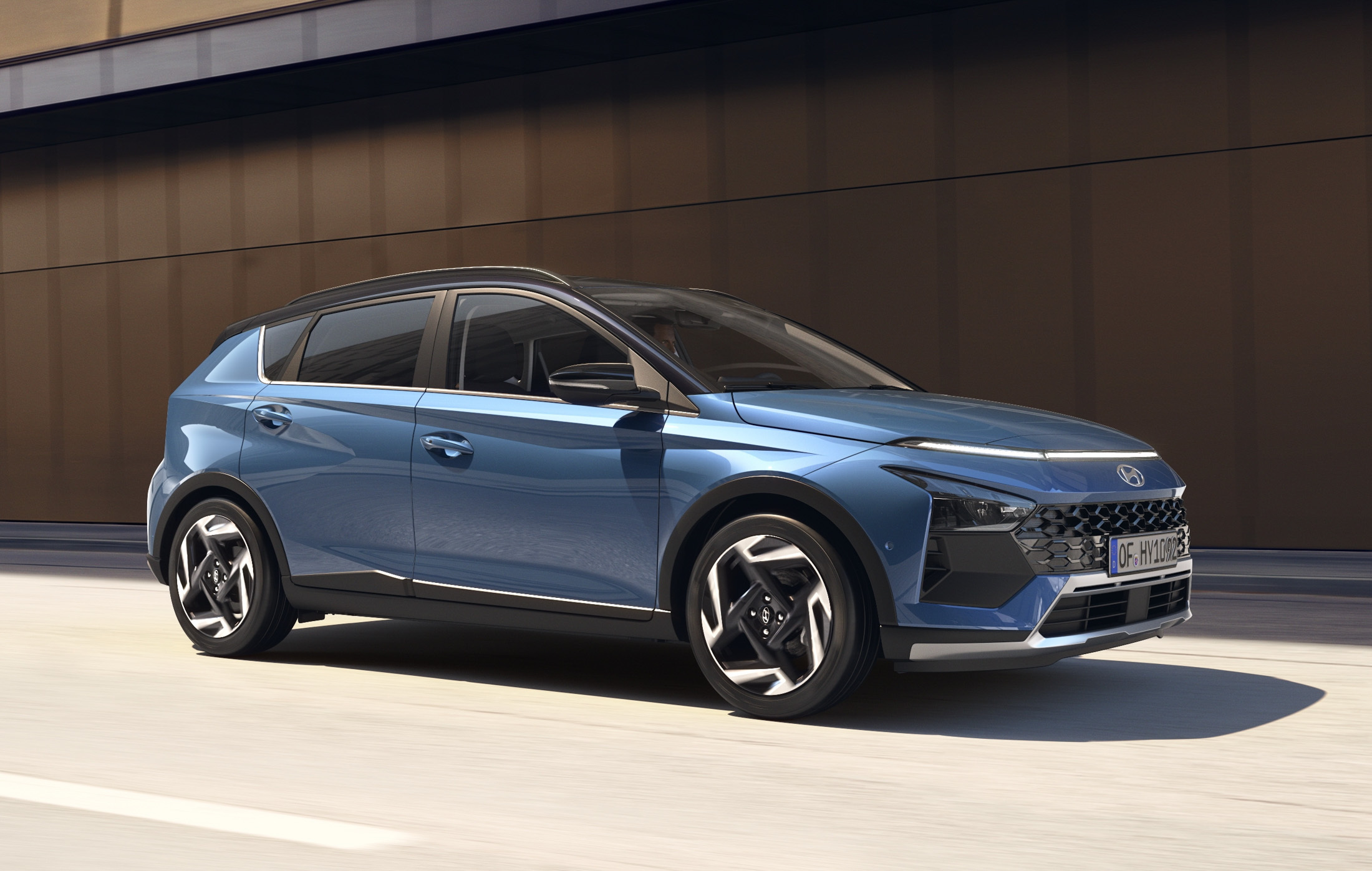Ask any ageing Hollywood celeb and they’ll tell you that the best kind of facelift is the one you don’t even notice. Maybe that was what Hyundai’s designers were aiming for when they set about giving the now three-year old Bayon a bit of cosmetic attention, because it’s incredibly difficult to tell old from new.
To be fair, the Ford Puma-rivalling Bayon already featured Hyundai’s latest design language including a split-headlight treatment on the nose that included a pair of razor-slim DRLs. What it didn’t have, but does now, is a full width light bar to connect those DRLs, just like you’ll find on many newer Hyundais. There are also some subtle changes to the bumpers and grille that reduce the amount of body-colored plastic on the front end in favor of more moody black and give the dinky hatch a wide-mouth look we predicted in our spy-shot story.
It’s the same subtly tweaked story at the back – more black plastic and newly reshaped reversing lights in the bumper – so anyone wanting to make their Bayon’s post-facelift status clear might want to consider one of the four new paint colors Hyundai has added to the configurator palette.
Related: Hyundai Bayon Joins Range As Entry-Level Subcompact SUV

The Bayon’s interior already felt reasonably techy thanks to a 10.25-inch digital instrument cluster that was standard in some markets, but the main infotainment screen was a fairly small 8-inch affair unless you paid to upgrade to the 10.25-inch alternative. For 2024 the big display comes standard across the range and every country’s Bayons come with digital gauges. The navigation system can also accept over-air updates.
And that’s pretty much it as far as the facelift goes. Hyundai hasn’t specifically mentioned the powertrains, which must mean Bayon buyers will continue to choose from two versions of the same 1.0-litre three-cylinder tubocharged engine. The base option produces 98bhp (100PS) and 127lb ft (172Nm), while its bigger brother bumps power up to 118bhp (120PS), though torque remains the same.
No word yet on prices or a Europe on-sale date, but the current Bayon costs from £21,570 ($27,376) in the UK and we imagine that the premium for the new car, much like the styling changes, will be almost imperceptible.













